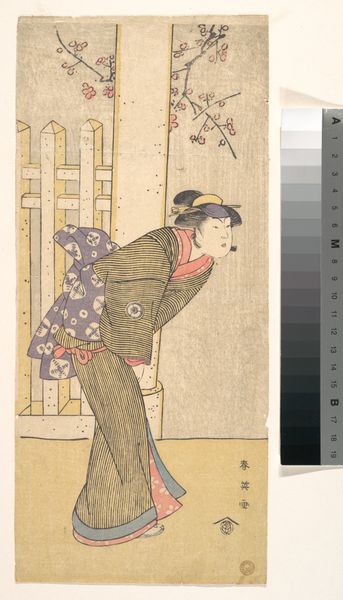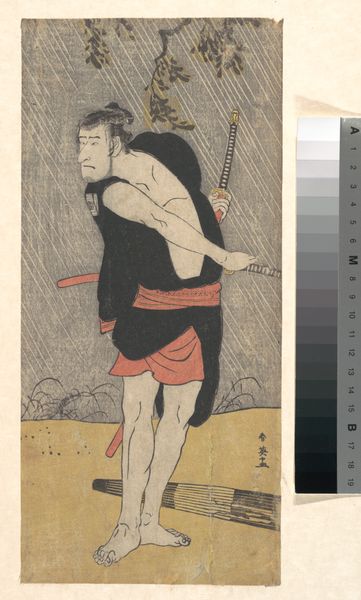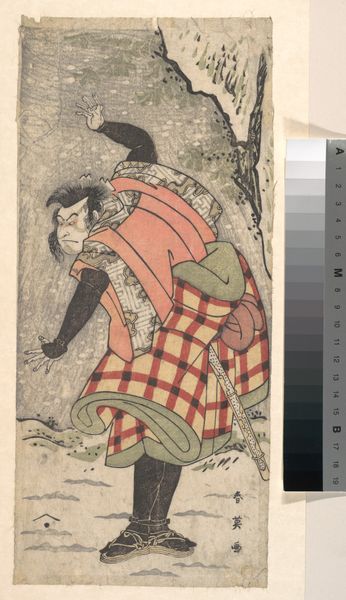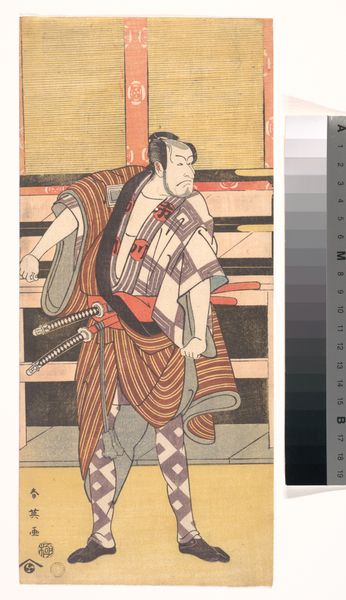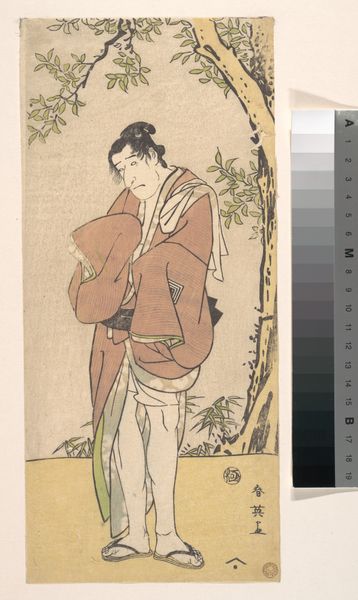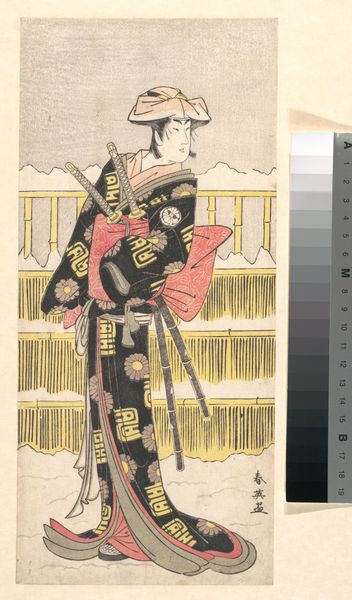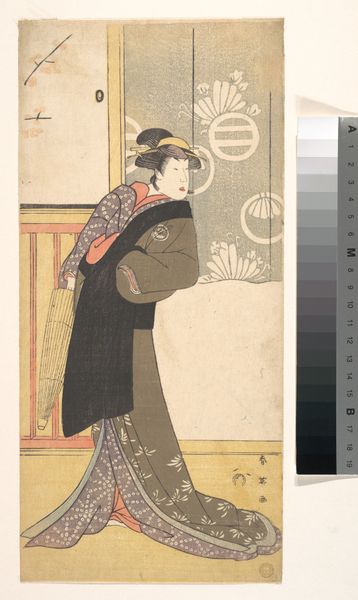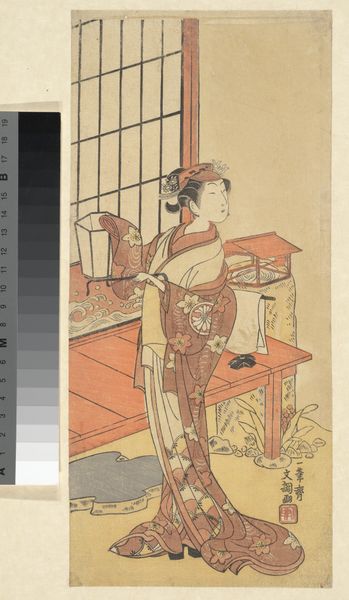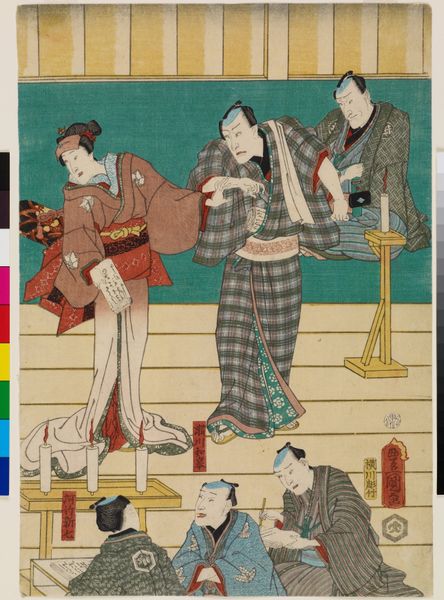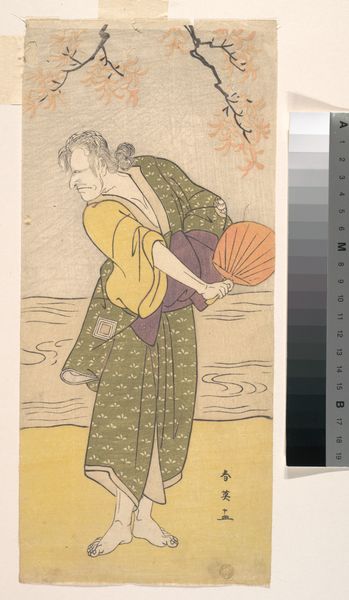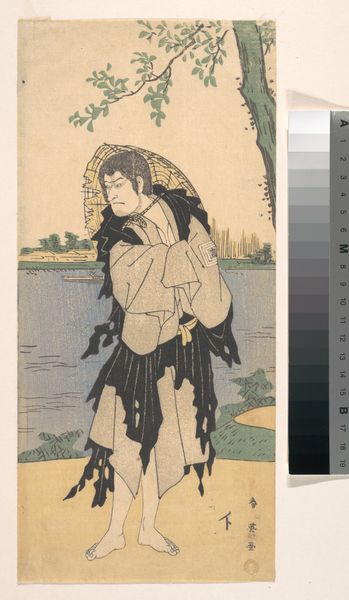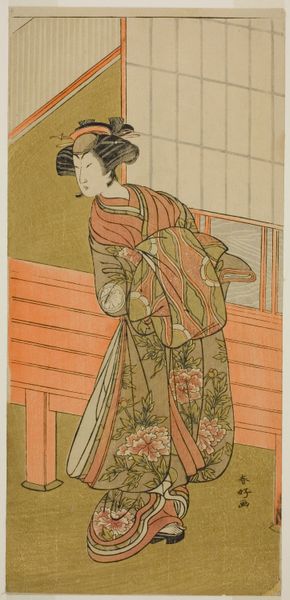
Arashi Ryuzo as a Man Clad only in a Pale Blue Garment 1786 - 1806
0:00
0:00
print, woodblock-print
#
portrait
#
narrative-art
# print
#
asian-art
#
ukiyo-e
#
figuration
#
woodblock-print
Dimensions: 12 5/8 x 5 5/8 in. (32.1 x 14.3 cm)
Copyright: Public Domain
Editor: Here we have "Arashi Ryuzo as a Man Clad only in a Pale Blue Garment," a woodblock print made between 1786 and 1806 by Katsukawa Shun'ei. It’s part of the Ukiyo-e tradition. The color palette is quite subdued, but the figure’s intense red eyes really draw you in. How do you read this piece? Curator: Immediately, my eye is drawn to the composition. Note how the diagonal of the fence opposes the nearly vertical figure, creating a visual tension. The restricted palette, as you pointed out, forces us to consider the lines, the forms themselves, and the relationship between the positive space of the figure and the negative space surrounding him. What do you make of the repetition of circular motifs, from the pattern on his robe to the artist's seals? Editor: That's a great point about the circular patterns. I hadn’t considered them collectively before. It almost creates a sense of unease; it seems very calculated. But is it just decorative, or does it represent something deeper? Curator: Perhaps both? We cannot ignore that these deliberate formal choices impact the overall affect. Think about how the texture, achieved through the woodblock technique, enriches the surface. Is it possible that what appears merely decorative is, in fact, integral to the work’s meaning? Consider that contrast – between the smooth skin of the actor and the patterned cloth. Editor: I see your point. Thinking about it structurally helps me focus on what makes this image compelling, beyond just the narrative it suggests. Curator: Precisely. It's about appreciating how line, color, and form contribute to the overall experience, guiding the viewer’s interpretation. Editor: This focus on form definitely changes how I see the Ukiyo-e tradition; I’ll be paying closer attention to compositional elements going forward. Curator: Indeed, form is never empty. It structures our understanding and dictates our emotional response.
Comments
No comments
Be the first to comment and join the conversation on the ultimate creative platform.
